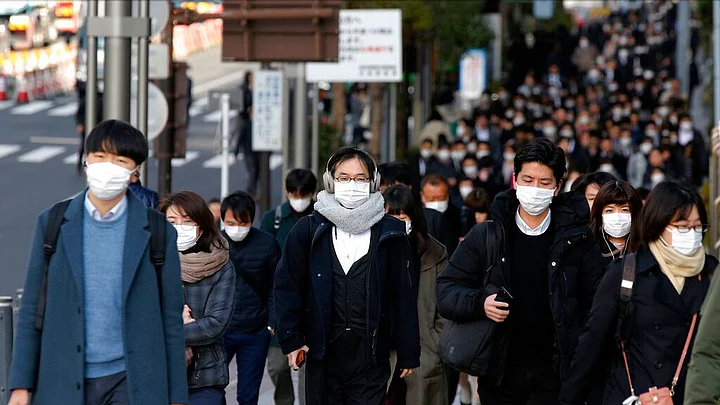According to the World Health Organisation's report dated 27th February, CONVID-19 has spread across 48 countries with total global cases at 82,294 (1185 new). Death toll rose to 2747 with 29 new fatalities. The number of cases reported outside China stands at 3664 with 746 added over 24 hours. 9 more countries reported coronavirus cases, showing how the virus is spreading fast via a complicated web of travel and tourism.
What has compounded the situation more is the reporting of new cases among people who were low risk, with no travel history, indicating perhaps that the novel coronavirus could become a community infection.
One look at the map is indicative of how far the virus has spread, but the World Health Organisation warns against calling the novel coronavirus a 'pandemic' yet.
With the US reporting its first case of CONVID-19 with no known travel history in California, the US Centers for Disease Control and Prevention is expanding it's testing capacities and including a larger number of people in its ambit.
So far, tests were only being administered to those who had been to China or had been in touch with a confirmed patient. Now they are expanding testing among those with travel history to Iran, Italy, Japan and South Korea.
The patient in California and in Germany had not travelled to any country reporting Coronavirus, or had been in contact with anyone who has been infected. This has lead to worries that the outbreak already spreading at a community level.
The New York Times reported a doctor as saying, "That would suggest there are other undetected cases out there, and we have already started some low-grade transmission.”
With Italy and Iran emerging as new epi centers, and those travelling to these countries now under observation, the concern has shifted out of China, where the virus has peaked.
So could CONVID-19 become the next community infection? An infection that becomes so normalised that six sitting judges of the second most populous country test positive to it, like H1N1?
We spoke with Prof Ramanan Laxminarayan, head of Centre For Disease Dynamics, Economics & Policy.
Why are 'Unrelated Cases' a Concern?
By all indications, the virus is mild. A study, the largest of its kind to date, published by Chinese health officials says that nearly 81 percent of those infected had mild symptoms - meaning they displayed low signs of pneumonia.
14 percent cases were severe - shortness of breath, low blood oxygen saturation and lung problems.
5 percent were critical - respiratory failure, septic shock, multiple organ dysfunction.
So, this is good news, right?
Well, not if those with mild symptoms or no symptoms don't visit doctors or get tested or treat it as a common cold.
Comparisons with SARS and H1N1
Compared to SARS or Severe Acute Respiratory Syndrome, that killed nearly 10 percent of those infected between 2002-2003, CONVID-19 has a fatality rate of 2.3 percent in China. But it does seem to spread faster. In an interview with IndiaSpend, infectious diseases expert and a professor with Ashoka University, Prof Gautam Menon had this to say,
SARS was unique in that it became milder as it spread around the world and completely disappeared in a couple of years, with the last reported case in June 2003.
It is early days yet, but it is possible that the novel coronavirus goes away as the weather gets warmer. And then there is also a very real possibility that it becomes a seasonal occurrence, much like the seasonal flu.
Dr Ramanan says that coronaviruses are unique, in that they don't usually infect humans. Unless the human interaction with the animals is as close as it was in the animal wet market in Wuhan, the epicenter of the disease.
It's early days yet.
Also Read: CONVID-19: ‘India Has Been Lucky So Far’

